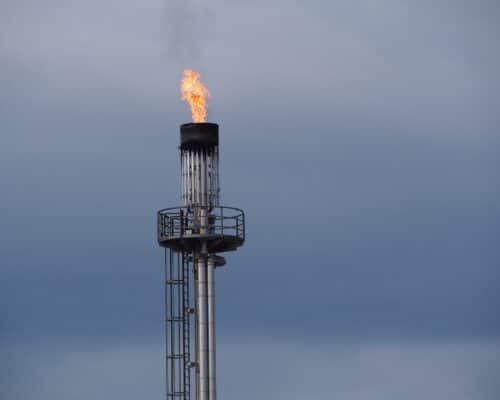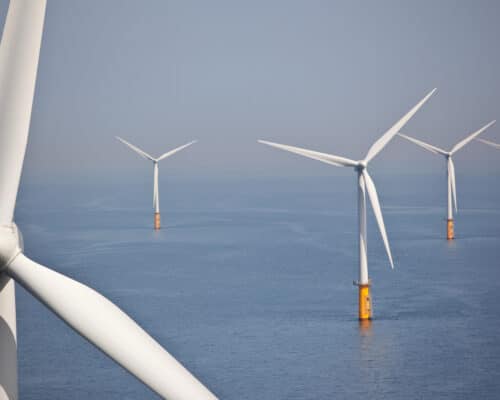The Future of Natural Gas In Asia
23 March 2023 – by Tim Daiss
The future of natural gas in the Asia-Pacific region was the focal point of a workshop sponsored jointly by the Economic Research Institute for ASEAN and East Asia (ERIA) and the Gas Exporting Country Forum (GECF) held in Jakarta on February 21.
The dominant theme surrounded expanding the usage of liquefied natural gas (LNG). According to the participants, this usage includes applying existing and affordable fuels and energy technologies to expand the use of natural gas to reduce greenhouse gas emissions meet the energy demand.
However, that basic premise has considerable problems. Natural gas, when used for power generation, emits at least half of the carbon emissions as coal. Gas is also much dirtier than originally thought. Natural gas use emits methane emissions, which is more than 25 times as potent as carbon dioxide at trapping heat in the atmosphere.
Natural Gas Demand Forecast
The workshop also included a long-term global gas demand forecast. The forecast predicted that natural gas consumption will more than double to over 350 billion cubic metres by 2050.
As such, the participants call for “substantial investment” in LNG regasification terminals and projects. By 2050, they add that the cumulative upstream and midstream investment required to satisfy the global gas rising demand will reach as much as USD 10.5 trillion.
ERIA’s Senior Policy Fellow for Energy and Environment Professor Jun Arima fleshes out the case even more. He said that “negating fossil fuel investment could prolong the current energy crisis, erode economic growth and hamper public support for climate actions”.
The Future of Natural Gas
However, these assumptions about the future of natural gas are false.
Renewable power projects can be built quicker than their LNG regasification and gas-to-power counterparts. Solar projects can be built in around eight to 14 months. A 10-megawatt (MW) wind power project can be built in two months. A larger 50-MW wind farm can take six months to build.
However, LNG projects can take as long as three years to build, including the necessary infrastructure and pipelines. That process can also extend to up to five or more years, depending on regulatory and geopolitical factors. Meanwhile, gas-to-power plants can take up to six years to build.
Additionally, a recent World Economic Forum report found that renewables are now significantly undercutting fossil fuel projects as the world’s cheapest energy source.
Renewables Remain the Logical Choice
This beckons the question: Why use economic development as a rationale for more gas and LNG build-out when quicker-to-build solar and wind power projects can easily spur economic growth? That includes new jobs, along with the necessary climate change mitigation advantages.
It also raises the question: When will we phase out natural gas?
The workshop also minimised carbon emission problems from gas by advocating carbon capture and storage technology (CCS). ERIA’s Special Advisor on Energy Shigeru Kimura has supported the idea of using natural gas as a transition fuel until 2050 while using CCS to achieve carbon neutrality.
Furthering the Carbon Capture and Storage Narrative
The Asia Zero Emission Community Ministerial Meeting (AZEC) in Tokyo on March 4 pushed the CCS narrative even further. It reached the consensus that enhancing the upstream development of natural gas and LNG is necessary for securing a stable supply and meeting future demand.
It added that making natural gas a zero-emission energy source through CCS and conversion to hydrogen and ammonia is important.
However, most analysts agree that wide-scale hydrogen usage is at least 30 years away. Moreover, many gas proponents foresee not green hydrogen usage but “blue hydrogen” along with CCS technology usage as the way forward. Green hydrogen emits no verifiable emissions since its produced using renewables. But, blue hydrogen uses natural gas – a fossil fuel – in its production.
Carbon Capture Technology Misses the Mark
Claiming that carbon capture technology is a promising way to reduce or even eliminate GHG emissions misses the mark. Yet, the oil and gas industry is using CCS in a catch-22 to justify its existing capex-intensive gas projects and new project proposals.
However, operating a carbon capture system is expensive and has yet to be deployed at the necessary scale. A CCS system is also incredibly energy intensive.
It often requires building a new power plant to run the system. This creates another new source of air and carbon pollution. This undermines the whole goal of capturing carbon in the first place. Storage also presents significant risks that CCS supporters either fail to address or merely downplay.
“Well failure during injection or a blowout could result in a release of large amounts of CO2; storage locations can leak CO2, as they are located close to fossil fuel reservoirs, where oil and gas wellbores provide a pathway for CO2 to escape to the surface,” a Food and Water Watch report finds.
Faulty Workshop Conclusions
Finally, the conclusions reached by both the ERIA-backed workshop and AZEC appear to be based on last year’s energy crisis with information that justifies more gas and LNG build-out. But, then again, the climate needs anything but more rationale that promulgates continued fossil fuel usage and development.
Investing in GHG and methane-intensive gas projects that ensure prolonged and varying degrees of carbon emissions well into the middle of the century is cause for concern.
This is particularly bothersome since these projects have an operational lifespan of around 30 years or more. This means new projects sanctioned now that become operational in four years would ensure corresponding emissions until around 2060. That’s 10 years after most countries have pledged to become net zero.
by Tim Daiss
Tim has been working in energy markets in the Asia-Pacific region for more than ten years. He was trained as an LNG and oil markets analyst and writer then switched to working in sustainable energy, including solar and wind power project financing and due diligence. He’s performed regulatory, geopolitical and market due diligence for energy projects in Vietnam, Thailand and Indonesia. He’s also worked as a consultant/advisor for US, UK and Singapore-based energy consultancies including Wood Mackenzie, Enerdata, S&P Global, KBR, Critical Resource, and others. He is the Chief Marketing Officer (CMO) for US-based lithium-sulfur EV battery start-up Bemp Research Corp.
Read more



